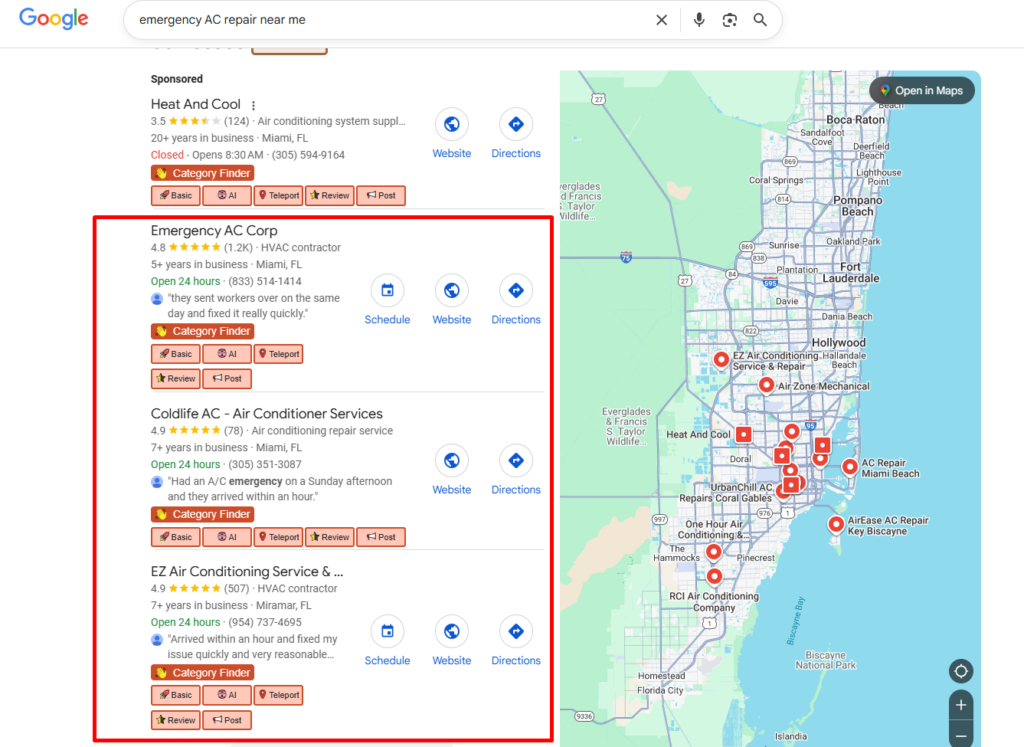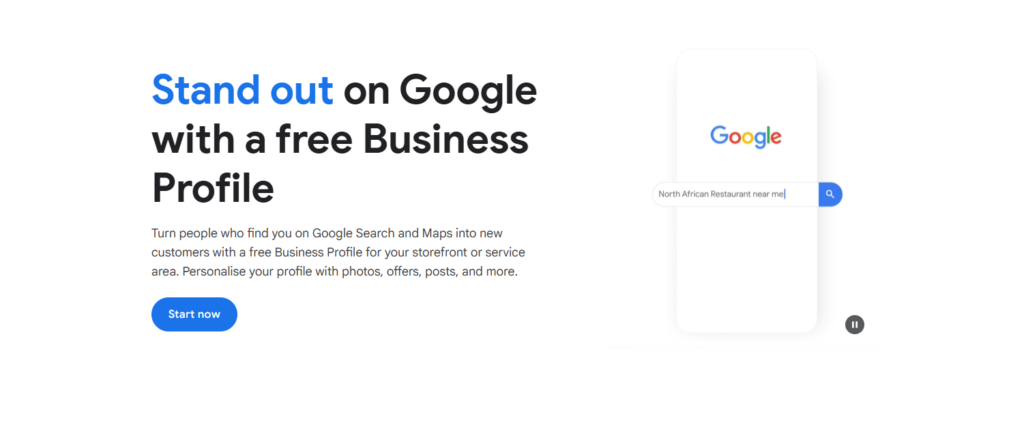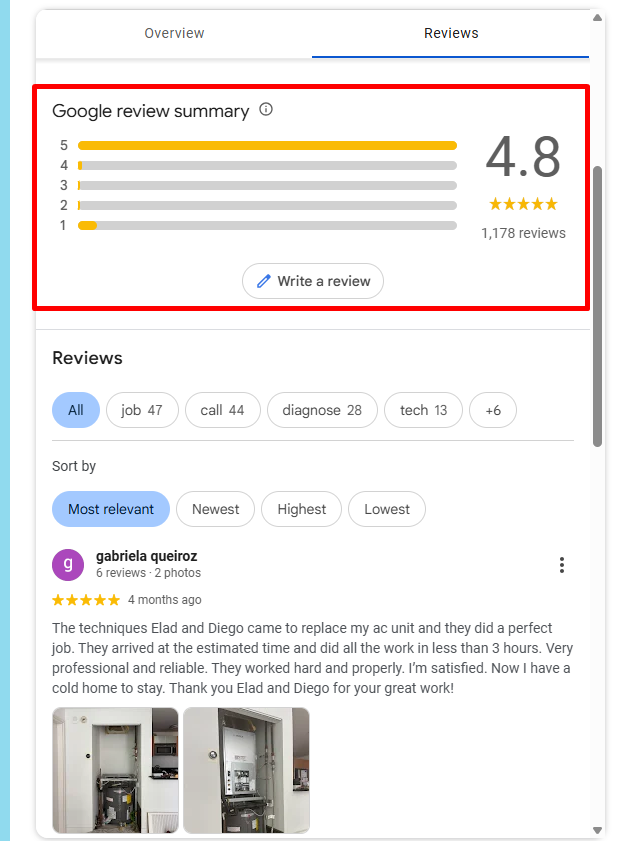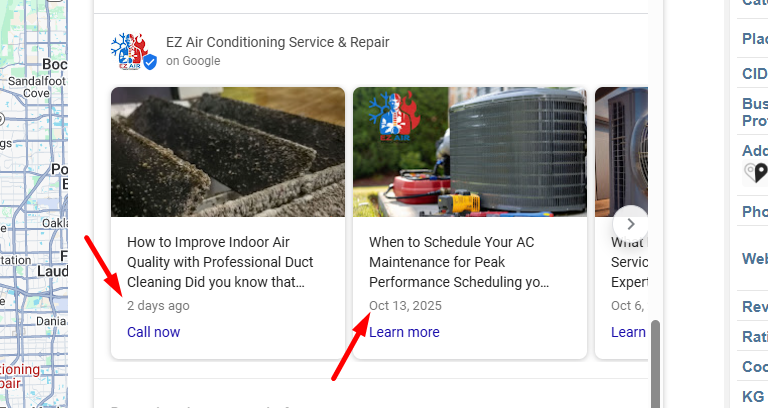Here’s the hard truth: Your competitors are stealing customers while you’re invisible on Google Maps.
Last week, a local HVAC contractor told me he was spending $3,000/month on Facebook ads.
Meanwhile, his Google Business Profile sat empty—not even claimed.
When I showed him that his competitors were ranking in the top 3 for “emergency AC repair near me” (searches happening 200+ times per month in his area), he physically winced.

Those top 3 spots? They’re called the Google Local Pack.
And if you’re not in them, you’re losing money every single day.
Why This Matters for Your Business
Businesses listed in the Google 3-pack receive 126% more traffic and 93% more actions—like phone calls, website clicks, and direction requests—compared to businesses ranked between positions 4-10.
That’s not a marginal difference. That’s the difference between your phone ringing off the hook and wondering why “marketing doesn’t work.”
The Local Pack appears in the #1 organic position on 93% of local-intent searches, putting it above every other result on the page.
If you want to dominate your local market without burning cash on ads, mastering local SEO strategies isn’t optional—it’s survival.
Let me show you exactly how to make Google Maps work for you.
What Is Google Maps SEO (And Why Should You Care)?
Google Maps SEO is the process of optimizing your online presence so your business shows up when someone searches for what you offer in your area. Unlike traditional SEO, which focuses on your website, Google Maps SEO is all about your Google Business Profile—formerly known as Google My Business.
Think about it: When someone searches “plumber near me” at 10 PM with a burst pipe, they’re not reading blog posts. 76% of people who search on their smartphones for local businesses visit that business within 24 hours, and 28% of those visits end with a purchase.
Here’s what that means for you:
- Zero advertising costs – You’re not paying per click; you’re earning visibility through optimization
- High-intent customers – People searching “open now near me” are ready to buy right now
- 24/7 lead generation – Your optimized profile works while you sleep
- Mobile-first visibility – Most local searches happen on phones, exactly when people need you
The difference between ranking #1 and #4 in local search?
The top Map Pack position has an average click-through rate of 17.6%, while positions two and three see average CTRs of 15.4% and 15.1%, respectively.
The CTR dramatically drops off after this.
How Google Decides Who Ranks (The 3 Factors That Matter)
Google uses three main signals to determine your Google Maps ranking. These factors are relevance, distance, and prominence. Let me break them down in plain English:
1. Relevance: Does Your Business Match What People Search For?
Relevance is how well a Business Profile matches what someone is searching for. If someone searches “emergency locksmith,” Google looks at your business category, description, and services to decide if you’re a match.
What this means for you:
- Choose the most accurate primary category for your business
- Add all relevant secondary categories (up to 9 additional ones)
- Use natural language in your business description that matches how customers actually search
2. Distance: How Close Are You to the Searcher?
Distance refers to how far each business is from the customer who’s searching. This is the one factor you can’t control—you can’t move your physical location.
But here’s the workaround:
- If you serve multiple areas, create separate service area listings
- Be extremely specific about your service areas in your profile
- Use location pages on your website to target different neighborhoods
3. Prominence: How Well-Known and Trusted Are You?
Prominence means how well-known a business is. Prominent places are more likely to show up in search results. Google measures this through:
- Number and quality of reviews – More reviews = more visibility
- Rating score – Only 48% of consumers would consider using a business with fewer than 4 stars
- Citations – How many other websites mention your business name, address, and phone number
- Backlinks – Quality websites linking to your site
- Engagement signals – Clicks, calls, direction requests on your profile
Read also: Google Maps vs. Google Search: Why Your Business Needs to Win Both (Local SEO 101)
The Step-by-Step Google Maps SEO Setup (Even If You’re Starting From Zero)
Step 1: Claim and Verify Your Google Business Profile (30 Minutes)
Before you can optimize anything, you need ownership of your listing. Without it, your business has no control over how it appears in local search results, and potential customers may see outdated or incorrect information.

Here’s what to do:
- Go to https://business.google.com/en-all/business-profile/ and search for your business name
- If it exists, click “Claim this business” and verify ownership
- If it doesn’t exist, click “Add your business to Google”
- Google will verify you via postcard, phone, email, or video (usually takes 5-7 days)
Pro tip: Use tools like EmbedSocial to streamline the verification process and manage multiple locations efficiently if you have more than one location.
Step 2: Complete Every Single Section (This Is Critical)
Businesses with complete, well-optimized Google Business Profile listings receive 5× more views on Google Maps and are 2.7× more likely to attract engagement from customers.

Your complete profile needs:
- Business name – Use your actual business name (don’t stuff keywords here; Google penalizes that)
- Address – Exact physical location or service areas
- Phone number – Local number preferred over 1-800 numbers
- Website URL – Links to your main site or a landing page
- Business category – 32% of SEO professionals believe that Google Business Profile is the most essential factor to rank well in the map pack
- Hours of operation – Keep these updated, especially for holidays
- Business description – 750 characters max; describe what you do and who you serve
- Attributes – Select relevant ones like “women-led,” “veteran-owned,” “wheelchair accessible”
- Services – List specific services with descriptions
- Products – If applicable, show what’s in stock
Time investment: 1-2 hours to do it right the first time. Professional local SEO services can handle this setup and ongoing optimization if you’d rather focus on running your business.
Step 3: Add High-Quality Photos (And Keep Adding Them)
Listings with 10 or more photos saw 34% higher engagement on Google Business Profiles.
What photos to upload:
- Your storefront or office exterior
- Interior shots showing your space
- Team members at work
- Products or completed work (before/after shots work great for contractors)
- Your logo
- Cover photo that represents your brand
Upload schedule: Add 2-3 new photos every month. Google rewards fresh content.
Step 4: Get Reviews (The Right Way)
Here’s where most businesses fail. They either ignore reviews completely or spam customers with generic “leave us a review” requests.

90% of marketers say that reviews directly impact ranking, and customers are 2.7 times more likely to consider a business reputable if they find a complete Business Profile on Google Search and Maps.
The simple review strategy that works:
- Ask immediately after service – Strike while the experience is fresh
- Make it easy – Send a direct link to your review page (use your Google Business Profile’s short URL)
- Ask the right customers – Your happiest customers are most likely to leave reviews
- Respond to EVERY review – 86% of consumers said they’re ready to look past negative reviews if the business responds and adequately addresses the issue
Let me give you an example.
A local dentist we worked with was averaging 2 reviews per month. We implemented a simple post-appointment text message with a review link.
And within 90 days, they had 47 new reviews and jumped from position 8 to position 2 in the Local Pack.
Step 5: Post Regular Updates (Weekly Is Ideal)
Google Business Profile posts work like social media updates—they show potential customers you’re active and engaged.

What to post:
- Special offers or promotions
- New products or services
- Business updates (new hours, holiday schedules)
- Tips or advice related to your industry
- Event announcements
- Seasonal content
Frequency: Once per week minimum. Posts stay live for 7 days.
Step 6: Optimize Your NAP Citations Across the Web
Businesses listed on five or more local directories with an exact NAP match were 11% more likely to rank in the top 3 of the local map pack.
NAP = Name, Address, Phone Number
Your NAP needs to be exactly identical everywhere it appears online:
- Your website
- Google Business Profile
- Yelp
- Yellow Pages
- Industry-specific directories
- Local chamber of commerce websites
- Better Business Bureau
Even small differences (like “St.” vs “Street” or including/excluding suite numbers) can hurt your rankings.
Time-saving tip: Many comprehensive local SEO service packages include citation building and cleanup as part of the deal, which can save you 10-20 hours of tedious data entry.
Advanced Tactics That Separate Winners from Everyone Else
Once you’ve nailed the basics, these strategies will push you ahead of competitors:
Use Google Q&A Strategically
Your Google Business Profile has a Questions & Answers section. Most businesses ignore it. Smart businesses use it to rank for additional search terms.
How to use it:
- Ask yourself common questions customers have
- Answer them with detailed, keyword-rich responses
- Have team members or friends ask relevant questions so you can answer them publicly
Leverage “Near Me” and “Open Now” Searches
Search volumes for “open now near me” keywords have surged by as much as 400% recently.
Optimization tactics:
- Keep your hours obsessively updated
- Use “Special Hours” for holidays and events
- Add “24-hour service” or “Emergency services” if applicable
- Respond quickly to messages and calls (Google tracks this)
Build Local Backlinks
Focus on acquiring backlinks from reputable local sources, such as local business directories, local news websites, partnerships with other local businesses, and industry-specific directories.
Quick wins for local backlinks:
- Join your local chamber of commerce (instant directory link)
- Sponsor local events or sports teams
- Get featured in local news (send press releases about milestones)
- Partner with complementary local businesses and link to each other
- Create content worth linking to (local guides, resources, data)
Monitor Your Local Search Rankings
Use Local Falcon or BrightLocal Rank Tracker for hyper-local rankings to see exactly where you show up for different searches in different areas.
What to track:
- Your position for your top 10 target keywords
- Competitor positions
- Review velocity (how fast you’re gaining reviews vs competitors)
- Google Business Profile insights (views, clicks, calls, direction requests)
Common Mistakes That Tank Your Rankings (And How to Avoid Them)
Keyword stuffing your business name – Google penalizes this. Use your real business name.
Inconsistent NAP information – 62% of consumers will avoid a local business if they find incorrect information online. Audit your listings quarterly.
Ignoring negative reviews – 70% of consumers said they’re more likely to leave a review if they see the business responds to its online reviews. Response rate matters.
Choosing the wrong primary category – Your primary Google Business Profile category has massive ranking influence. Choose the most specific, accurate category, not the most popular one.
Not using service areas correctly – If you serve customers at their location (plumbers, electricians, house cleaners), set up service areas instead of showing your office address.
How Long Until You See Results?
Let’s be real about timelines:
- Claiming and optimizing your profile: Immediate to 2 weeks for initial visibility boost
- Reviews and engagement building: 1-3 months to see meaningful movement
- Top 3 ranking in competitive markets: 3-6 months with consistent effort
- Maintaining top rankings: Ongoing optimization required
The businesses that win at local search don’t treat it as a one-time project. They commit to consistent optimization, regular reviews, fresh photos, and weekly posts.
Your Next Steps (Pick One and Do It Today)
Don’t let this be another article you read and forget. Pick ONE action step right now:
If you haven’t claimed your Google Business Profile: Stop reading and claim it now. It takes 10 minutes, and Google will mail you a verification postcard.
If your profile is incomplete: Block 90 minutes today to fill out every section. Add photos, write your description, list your services.
If you have zero reviews: Text your 5 happiest customers right now and ask for a review. Send them the direct link.
If you want expert help: Many businesses find that partnering with a specialized local SEO service accelerates results and frees them to focus on operations. A professional team handles the technical optimization, citation building, review management, and ongoing monitoring while you run your business.
The Bottom Line
Google Maps SEO isn’t complicated, but it is competitive. Over 68% of searchers trust Google 3-Pack results, which means ranking in those top 3 positions gives you credibility that money can’t buy.
The business owners who win in 2025 understand that local search visibility isn’t just about “being online”—it’s about being found by ready-to-buy customers at the exact moment they need you.
Your competitors are optimizing their Google Business Profiles right now. They’re collecting reviews, posting updates, and climbing the rankings while you’re deciding whether to start.
The question isn’t whether Google Maps SEO works. The question is: How many customers are you willing to lose while you delay?
Ready to dominate local search in your market? Explore our proven local SEO services designed specifically for businesses like yours, or start optimizing your Google Business Profile today.
Read also: